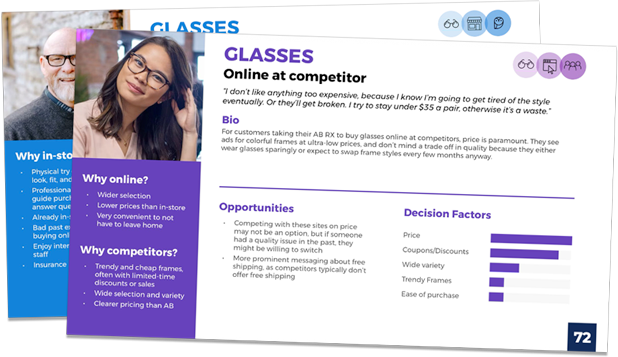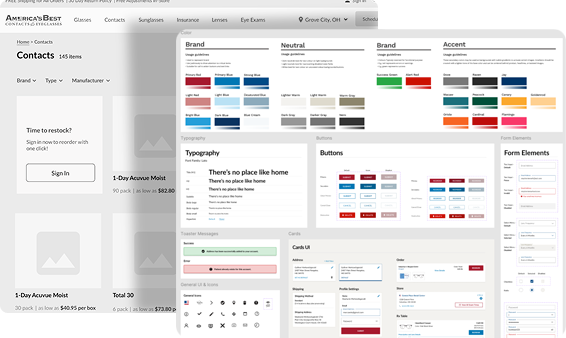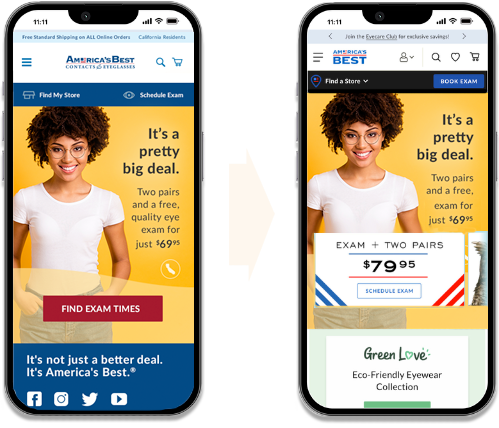As part of my previous employer's full brand update to their flagship America's Best stores, I led a conversion-focused e-commerce refresh.
Brand Strategy • Design Systems • Transactional UX
The Challenge
My previous employer’s flagship brand,
americasbest.com, recently underwent a full brand refresh in tandem with the rollout of
new storefront logos across 1,400+ retail locations and a national advertising campaign. While the exam scheduling tool had already been optimized (see
Revenue Increase through Strategic UX Enhancements), the e-commerce experience was outdated and unaligned with the new brand identity.
Additionaly, patient feedback revealed many
visitors were unaware that online purchases were available. The key challenge was to modernize the site’s look and feel and
increase e-commerce objectives while maintaining scheduled eye exams—our top KPI.
The Strategy
I led a comprehensive UX overhaul that began with persona development and user research to better understand customer motivations and behaviors. From there, I led the creation of scalable design system, wireframes, and polished mockups to unify the site’s visual and interaction patterns. Key design changes included simplifying navigation to reduce cognitive load, clarifying CTA hierarchy to support conversions, and improving product discovery through better PDP access.
Since a
cohesive brand overhaul cannot be iteratively released via Agile sprints, we ensured pixel-perfect execution through
extensive UAT and "slow released" the new variant by
AB Testing increasing segments of total traffic. This also alowed us to accuratley measure the imapct of our updates.
View Related Figma Document
The Outcome
The refresh led to a measurable lift across all major e-commerce metrics (add-to-cart, checkout initiation, and completed purchases)
as well as a minor increase in exam scheduling! By clarifying the navigation and removing barriers from the user's intent, we
improved goals across the board.
Perhaps most importantly, the rise in PDP traffic confirmed a shift in user behavior—
customers increasingly pre-shopped online before scheduling in-person exams. This insight shaped future strategies and proved that
user-centered design can enhance secondary engagement metrics without sacrificing core KPIs.






